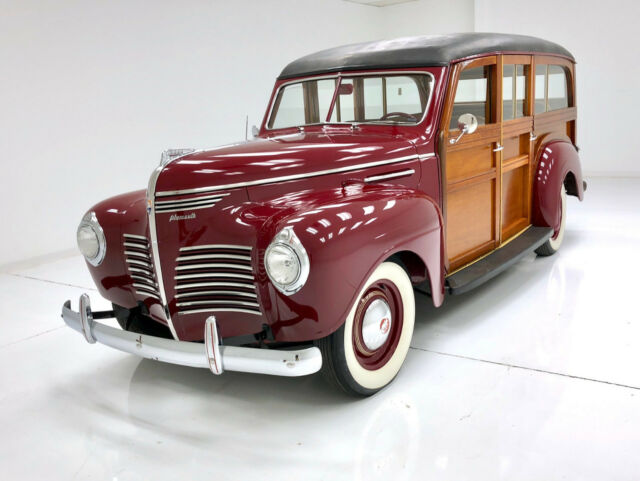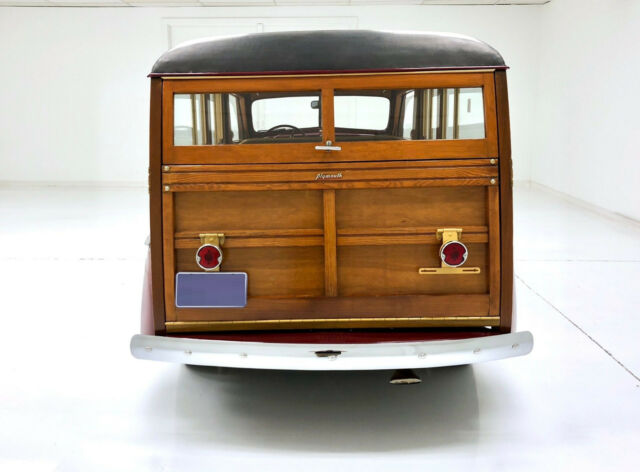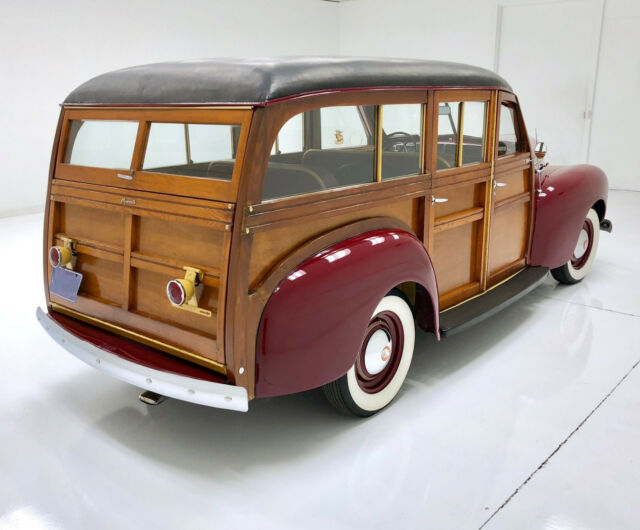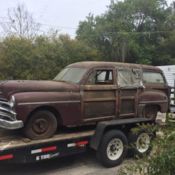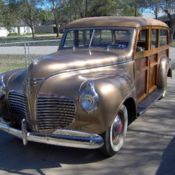39 Plymouth Woody Station Wagon
Price: -
Item location: Sultan, Washington, United States
Description:
1939 Plymouth Woody Station Wagon
An immaculate Plymouth that has left no stone unturned, shows perfect deep maroon Plymouth front body, fenders, hood, and cowling, and rubber covered running boards. Chrome bumpers and brite-work badging, are all in excellent condition. Ash and Oak cover the remainder of the car, and make up most of the structure, along with steel hinges, window surrounds, and door hinge hardware. Varnished finish appears in very fine condition interior and exterior. Mayflower wood ship embellishments are on the center of the moon hubcaps. Wide white sidewall tires compliment the look. This is all topped by a new vinyl roof which covers the interior exposed slats.Drivetrain
Under the hood is the road-proven 201.3-cu.in. L-head, straight-six engine. It features a 6.7:1 compression ratio, solid-lifter camshaft, aluminum alloy pistons with four rings, hardened exhaust-valve seat inserts, full-length water jackets, full-pressure lubrication, calibrated ignition and a one-barrel carburetor. It produced 84hp. The pistons, valve-lifter faces and the crankshaft journals were "Superfinished." According to the company, it was a, "...process developed by Chrysler for finishing metal surfaces to microscopic smoothness..." to reduce friction and increase durability. To decrease heat and extend longevity, the clutch bellhousing featured ventilation holes. Helical-cut Amola-steel gears and blocker-type synchronizers in the three-speed manual transmission reduced running noise and clash during gear changes. Roller bearings were used in the universal joints to reduce heat and friction, and 4.10 Amola-steel hypoid gears were housed in the Hotchkiss differential. Amola steel was developed by Chrysler and said to be stronger than other types of steel. The box-section, X-braced frame utilized a coil-sprung independent front suspension with upper and lower control arms, an anti-roll bar (in De Luxe) and "True-Steady" steering with an 18.2:1 gear ratio. Leaf springs with metal covers located the rear end and airplane-type shocks and a lower center of gravity improved handling. Hydraulic 10-inch drum brakes were used front and rear, and the Superfinished drums and contoured-ground brake facings provided full contact between them. The steel wheels measured 16 x 4 inches and 6.00 x 16 bias-ply tires were mounted.
Vehicle Details:
- Condition: Used
- Make: Plymouth
- Model: Woody Station Wagon
- Year: 1939
- Mileage: 26000
- Vehicle Title: Clear Want to buy? Contact seller!
